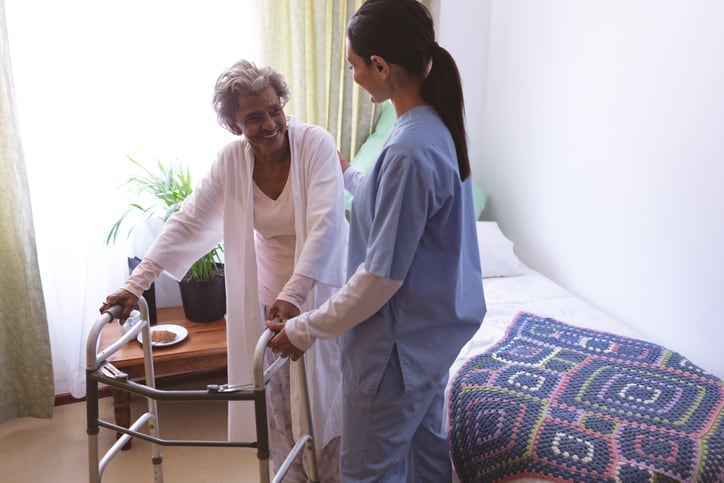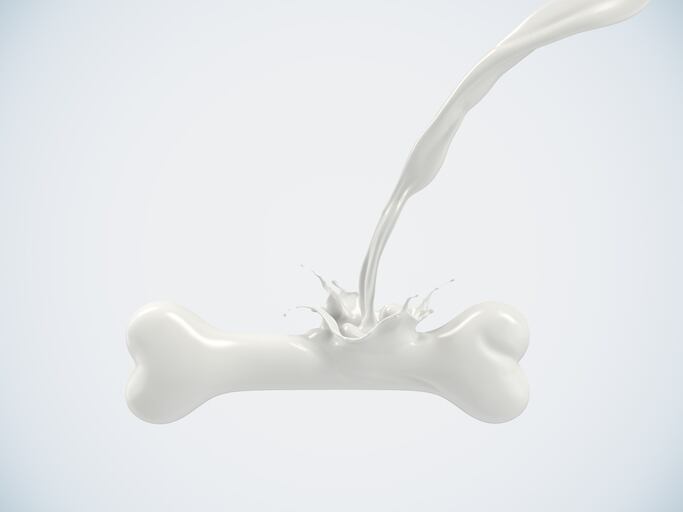Vitamin D intake may play a role in the chances of walking postoperatively, according to a new study from Rutgers that was published in The American Journal of Clinical Nutrition.
Senior author Sue Shapses said the research indicates that vitamin D deficiency in older adults could limit mobility.
“Hip fractures are associated with a high rate of morbidity and mortality, and successful ambulation after surgery is an important outcome in this patient population,” the researchers noted. “This study aims to determine whether 25-hydroxyvitamin D [25(OH)D] concentration or the Geriatric Nutritional Risk Index (GNRI) is associated with mortality or rates of walking in a patient cohort after hip fracture surgery.”
Shapses suggests that seniors take 800 international units (IU), equivalent to 20 micrograms, of vitamin D daily to prevent deficiency. Vitamin D is important for bone health, and people get it through some foods, exposure to the sun and vitamin pills.
Study details
The participants included 290 patients 65 or older who were undergoing operative hip fracture repair that were enrolled in a multi-center study in North America. The researchers examined the influence of vitamin D levels in blood serum and nutrition on mobility at 30 and 60 days. The study focused on death rate or inability to walk about 10 feet without someone's help post-surgery.
Vitamin D impacts mobility, not mortality
The research found that vitamin D levels greater than 12 nanograms per milliliter (12 parts per billion) in blood serum are associated with a higher rate of walking at 30 and 60 days after hip fracture surgery.
"These studies suggest that too much or too little vitamin D will affect mobility and falls in the elderly," Shapses said.
“Vitamin D deficiency is associated with reduced ambulation after hip fracture surgery, whereas Geriatric Nutritional Risk Index (GNRI) also contributes to immobility, but is a less reliable predictor. Mechanisms that can explain why vitamin D deficiency is associated with mobility should be addressed in future studies,” the authors conclude.
The research also found that mobility was reduced if nutritional status was poor. “Poor nutritional status showed an overall trend to reduce mobility. There was no association of vitamin D or GNRI with mortality at either time,” the report noted.
Implications
“This matters because vitamin D deficiency and malnutrition are common disorders in elderly patients with hip fractures and often occur together since both are complications of poor nutrition,” said Shapses.
Shapses added that the next step is determining why vitamin D concentration impacts mobility: “For example, it is not clear if severe vitamin D deficiency is associated with direct effects on muscle, cognition and/or other organ systems.”
Previous studies have shown that taking 800 IU of vitamin D a day can prevent falling and fractures. A 2019 Rutgers-led study indicated that high vitamin D intake (4,000 IU a day) compared with 600 IU a day may reduce reaction time, potentially lessening the risk of falling and fractures.
The current recommended dietary allowance for vitamin D is 600 IU daily for people from 1 to 70 years old and 800 IU for people over 70.
Source: The American Journal of Clinical Nutrition
19 February (2020) doi.org/10.1093/ajcn/nqaa029
“Vitamin D deficiency is associated with reduced mobility after hip fracture surgery: a prospective study”
Authors: L. Hao, et al.




